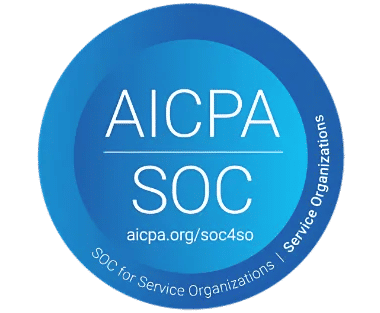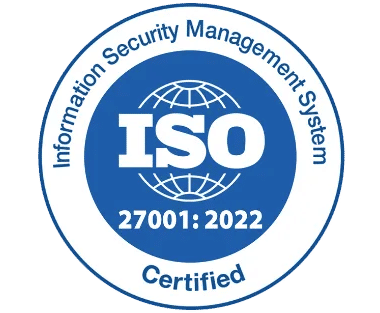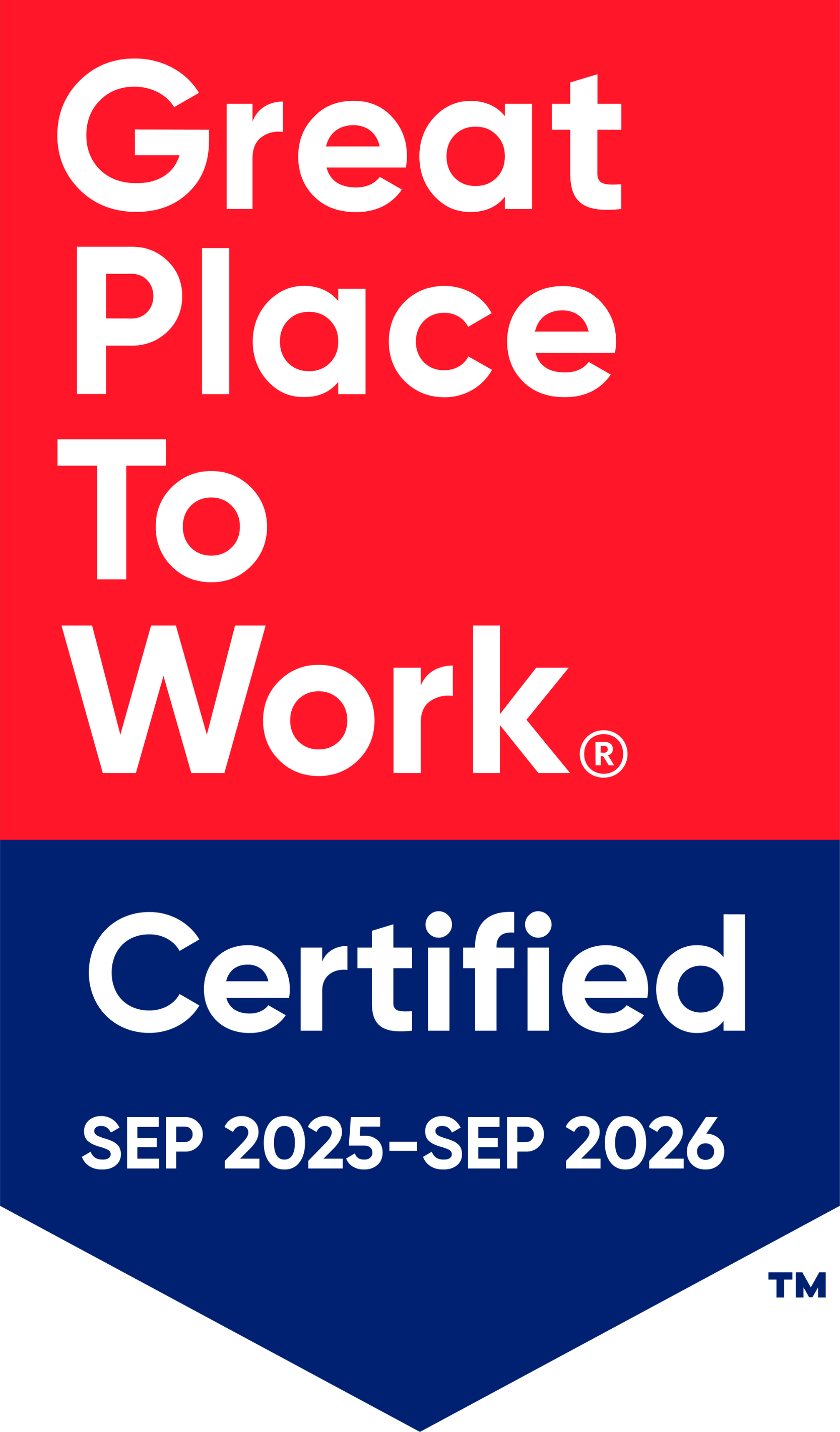Essential Employee Offboarding Checklist for 2025

Employee departures are an inevitable part of any business, whether it’s voluntary or involuntary. They can happen unexpectedly or with some notice, but regardless of the situation, an organized offboarding process is crucial.
The way you handle an employee’s departure says a lot about your company, much like the way you welcome new employees. You may be focused on redistributing the workload or drafting a job description for their replacement, but there’s something just as important that shouldn’t be overlooked: knowledge transfer. It’s essential to capture the departing employee’s unique skills and insights to ensure that your team maintains its productivity. Taking the time to acknowledge their contributions and to set up an efficient knowledge transfer process will pay off in the long run.
Why a Structured Employee Offboarding Checklist Matters
A poorly managed offboarding process can lead to security risks, legal issues, and a negative employee experience. Studies show that 71% of employees who had a positive offboarding experience would recommend their employer to others. A well-planned offboarding process helps safeguard company data, ensures compliance, and enhances the departing employee’s perception of the company.
In this article, we’ll highlight the key elements that should be part of your employee offboarding checklist:
1. Provide a Clear Exit Notice
2. Secure Company Assets and Access
3. Conduct an Exit Interview
4. Process Final Payroll and Benefits
5. Ensure Knowledge Transfer
6. Maintain a Positive Last Impression
7. Conduct a Compliance & Legal Review
Step-by-Step Employee Offboarding Checklist
A well-structured employee offboarding checklist ensures a smooth transition for both the employee and the company. It helps maintain security, compliance, and a positive employer brand during the departure process.
1. Provide a Clear Exit Notice
A structured exit process begins with formalizing the employee’s departure. Whether the exit is voluntary (resignation) or involuntary (termination), clear communication prevents misunderstandings and ensures a smooth transition.
Confirm Resignation or Termination
- When an employee submits a resignation, acknowledge it promptly in writing.
- If the departure is due to termination, ensure that HR follows legal guidelines and company policies.
- Officially document the resignation or termination in HR records, including reasons and discussions.
- Provide a written confirmation with details of the employee’s final working date, transition expectations, and next steps.
A well-documented offboarding process ensures compliance with labor laws and protects both the company and employee.
Set a Last Working Day
- Collaborate with the employee and their manager to establish a final work date.
- If applicable, discuss notice period requirements as per company policy or contractual agreement.
- Clearly outline whether the employee is expected to work through the notice period or if immediate departure is required (common in terminations).
- If the role requires a replacement, plan knowledge transfer sessions before the last day.
Setting expectations early minimizes workflow disruptions and allows for a seamless transition.
Review Remaining PTO & Benefits
- Check the employee’s accrued but unused paid time off (PTO) and determine if it will be paid out or forfeited based on company policy.
- Explain the continuation of benefits like health insurance, retirement plans, and stock options (if applicable).
- Provide information on COBRA (for U.S. employees) or other benefit transition programs available.
- If there are unpaid reimbursements or expenses, ensure they are settled before the final pay check.
Companies with clear PTO payout policies experience 30% fewer disputes over final pay checks.
Clarify Offboarding Expectations
- Provide the employee with a structured checklist outlining all offboarding steps, including asset returns, digital access revocation, exit interviews, and knowledge transfer.
- Assign a point of contact from HR to address any questions or concerns.
- Clearly communicate deadlines for completing offboarding tasks.
- If the employee holds sensitive data or works in a high-security role, reinforce confidentiality and compliance expectations.
A structured offboarding plan reduces last-minute chaos and ensures a professional and organized exit.
Address Any Counteroffers
- If the employee is resigning but is a valuable asset, management may consider a counteroffer.
- Discuss potential adjustments to salary, role, or benefits if retaining them aligns with company goals.
- If the employee accepts the counteroffer, ensure all agreements are documented and HR processes are updated.
- If they decline, proceed with standard offboarding steps while keeping the conversation positive.
50% of employees who accept counteroffers still leave the company within 12 months.
2. Secure Company Assets and Access
One of the most critical steps in offboarding is ensuring that the departing employee no longer has access to company assets, networks, and sensitive information. Failure to properly revoke access can lead to security breaches, data leaks, and even legal issues.
60% of ex-employees still have access to company data (TechRadar, 2024). Immediate revocation of credentials and retrieval of assets helps prevent potential security threats.
Collect Physical Assets
Employees often receive company-owned equipment to perform their duties, including:
- Laptops, desktops, and tablets – Ensure all devices are returned, checked for damage, and wiped clean if needed.
- Company-issued phones – Retrieve mobile devices to secure stored business contacts, messages, and apps.
- ID badges and access cards – Disable building access to prevent unauthorized entry.
- Credit cards and expense accounts – Close corporate cards and verify if any outstanding expenses need to be settled.
Lost or unreturned equipment can lead to financial losses and potential misuse of company property.
Revoke Digital Access
Once an employee leaves, their access to company systems must be revoked immediately to prevent data breaches. Steps include:
- Disabling email accounts – Redirect incoming emails to a designated team member or set up an auto-response.
- Revoking VPN and cloud access – Remove login credentials for company servers, cloud storage, and remote work tools.
- Blocking access to HR and financial systems – Ensure the departing employee cannot view or modify payroll, client data, or confidential business records.
- Removing from project management and communication platforms – Remove accounts from tools like Slack, Microsoft Teams, and Asana to avoid unauthorized communication.
29% of businesses have reported security incidents caused by former employees who still had system access.
Update Security Credentials
Shared accounts and passwords pose a major security risk when employees leave. Best practices include:
- Changing passwords for shared tools, especially those used by multiple team members.
- Resetting administrator-level access for IT and software tools.
- Reviewing login activity logs to detect any unauthorized attempts.
Automating the access revocation process ensures no credentials are overlooked and reduces human error.
Reassign Responsibilities
To prevent disruptions in workflow, a transition plan should be established before the employee’s departure:
- Identify ongoing tasks that need reassignment to another team member.
- Appoint an interim contact person for clients or internal departments that relied on the departing employee.
- Ensure knowledge transfer by having the employee document key processes or conduct training sessions.
Businesses that implement structured handovers reduce productivity losses by 47%.
Retrieve Sensitive Documents
Employees may have access to confidential documents such as:
- Client contracts, reports, or trade secrets.
- Internal strategy documents and financial data.
- Printed reports, notebooks, or USB drives containing company files.
To mitigate risks:
- Conduct a final document review to ensure no sensitive files are stored on personal devices.
- Use document tracking software to monitor file access history.
- Remind the employee of non-disclosure agreements (NDAs) and enforce confidentiality policies.
22% of departing employees admit to taking company data with them.
3. Conduct an Exit Interview
Exit interviews are a powerful tool for improving employee retention and refining company culture. When done correctly, they provide valuable insights into why employees leave and how the organization can enhance the work environment. A well-structured exit interview fosters transparency, builds trust, and leaves a lasting positive impression.
Companies that analyse exit interview data improve retention rates by 23% (Harvard Business Review, 2024).
Encourage Honest Feedback
Giving departing employees a safe space to share their thoughts allows organizations to uncover:
- Issues in team dynamics or leadership that may be driving turnover.
- Workplace challenges that may not be visible to upper management.
- Company strengths that employees appreciated, which can be leveraged for retention.
Encourage open-ended responses rather than “yes” or “no” answers to get deeper insights.
Use a Structured Questionnaire
A well-crafted questionnaire ensures consistency and meaningful data collection. Key areas to cover include:
- Reasons for leaving (career growth, salary, work-life balance, management, etc.).
- Job satisfaction and engagement levels during their tenure.
- Workplace culture and team collaboration experiences.
- Leadership effectiveness and how management supports employees.
- Suggestions for improvement to enhance retention.
Using a digital exit interview form can standardize responses, making it easier to track trends.
Keep It Confidential
Employees may hesitate to share honest feedback if they fear negative consequences. To encourage transparency:
- Assure them that their responses will remain anonymous (if possible).
- Communicate that their feedback will be used constructively rather than to place blame.
- Explain how the company plans to act on feedback to drive improvements.
Employees are more likely to provide genuine insights when they feel safe from retaliation.
Ask About Their Future Plans
Understanding where employees are heading next can highlight organizational gaps:
- Are they leaving for better compensation elsewhere?
- Do they see better growth opportunities in another company?
- Are they switching industries, indicating a broader workforce trend?
57% of employees leave due to a lack of career growth opportunities (LinkedIn Workforce Report, 2024).
If many employees leave for the same reason, the company can take action to improve retention.
Analyse Trends in Turnover
Tracking exit interview data over time can help identify:
- Patterns in employee departures (e.g., high turnover in a specific department).
- Leadership issues that may be causing dissatisfaction.
- Common workplace challenges affecting productivity and engagement.
Use HR analytics software to track exit interview data and generate reports for leadership.
Organizations that actively analyze turnover data are 32% more successful in reducing unwanted attrition.
4. Process Final Payroll and Benefits
Handling an employee’s final paycheck and benefits correctly is crucial to ensuring a smooth exit. Delays or miscalculations can lead to legal disputes, compliance issues, and a negative offboarding experience. A well-structured payroll and benefits process guarantees that employees leave on good terms while keeping the company legally compliant.
Mishandling final payments can lead to lawsuits 29% of employee disputes stem from payroll errors.
Issue Final Paycheck
Employees are legally entitled to receive all earned wages, bonuses, and reimbursements on their final paycheck. The timing and method of the final paycheck depend on state labor laws and company policy. Key components include:
Base salary and hourly wages: Ensure all hours worked are compensated.
Unpaid bonuses or commissions: If the employee is eligible for performance bonuses, ensure they receive them.
Expense reimbursements: Reimburse employees for any outstanding business expenses (e.g., travel, meals, supplies).
Unused PTO or vacation pay: Some states require employers to compensate for accrued vacation days.
Check state-specific laws to determine when the final paycheck must be issued. In some states, immediate payment is required upon termination.
Explain Benefits Continuation
When an employee leaves, their health insurance, retirement contributions, and other benefits may change. Employers must inform them of their options, including:
COBRA coverage: Allows employees to continue their health insurance for a limited period (typically 18 months).
Retirement plans (401k, pension, etc.): Guide employees on rolling over their retirement accounts.
Life and disability insurance: Clarify if these benefits will lapse or if continuation options exist.
67% of employees expect their employers to provide clear post-employment benefit options.
Provide Tax Documents
Employers must supply necessary tax documents for compliance and future tax filing. These include:
W-2 Forms (for employees): Sent by January 31 of the following year for tax reporting.
1099 Forms (for contractors): If applicable, issued for independent contractors or gig workers.
Final payroll statement: A breakdown of last wages, deductions, and benefits contributions.
Providing tax forms promptly avoids penalties and helps employees file their taxes accurately.
Settle Any Outstanding Deductions
Before releasing the final paycheck, ensure that all financial obligations between the company and the employee are resolved, including:
Company loans: If the employee had a salary advance or company-issued loan, discuss repayment options.
Equipment deposits: If a refundable deposit was taken for company assets (e.g., laptops, phones), determine refund eligibility.
Relocation assistance repayments: Some contracts require employees to pay back relocation costs if they leave within a certain period.
Get a signed acknowledgment from the employee to confirm final deductions, reducing potential disputes.
Clarify Stock Options or Equity Plans
Employees with stock options, RSUs (Restricted Stock Units), or equity plans need to understand their post-employment rights. Important considerations include:
Vesting schedule: Determine if the employee has any unvested stock or upcoming vesting dates.
Exercise window: Employees may have a limited time (often 90 days) to exercise stock options after leaving.
Tax implications: Stock sales may result in taxable income, so employees should consult a financial advisor.
58% of employees do not fully understand their stock options upon leaving (Harvard Business Review, 2024). Providing clear guidance helps avoid confusion.
5. Ensure Knowledge Transfer
A departing employee often takes valuable institutional knowledge with them. Without proper documentation and knowledge transfer, teams may struggle to pick up where the employee left off. A well-structured transition minimizes operational disruptions and ensures that business processes continue smoothly.
Companies that implement structured knowledge transfer processes reduce operational disruptions by 47% .
Document Key Processes
Employees develop unique approaches to handling tasks. If their methods aren’t documented, critical workflows may be lost. Before departure, have the employee create or update:
Standard operating procedures (SOPs): Step-by-step instructions for daily tasks.
Project status reports: Ongoing assignments, deadlines, and key stakeholders.
Client or vendor details: Important contacts and contract obligations.
Access information: Clarify which files, folders, or databases are used.
Use a shared cloud-based platform (like Google Drive or Notion) to store process documents for easy future access.
Train Replacement Staff
Assigning a replacement isn’t enough—proper training is essential for a seamless transition. Steps to ensure effective training include:
Shadowing sessions: Have the replacement employee work alongside the departing one.
Hands-on practice: Encourage the new hire to perform key tasks while the departing employee provides guidance.
Q&A opportunities: Allow time for questions to clarify any uncertainties.
Companies that provide structured transition training reduce new hire ramp-up time by 35%.
Assign an Interim Contact
If hiring a replacement takes time, designate a temporary point of contact to manage responsibilities until a permanent hire is in place. Consider:
Identifying the best fit: Choose someone familiar with the tasks.
Outlining expectations: Provide a clear list of short-term duties.
Setting a timeline: Define how long they will cover the role.
Leaving a role vacant without proper coverage increases workload for other employees and affects productivity.
Create How-To Guides or Video Walkthroughs
Written documents are helpful, but visual resources can enhance understanding. Encourage employees to create:
Step-by-step how-to guides: Ideal for complex tasks.
Screen recordings: Demonstrate system processes and software use.
FAQ lists: Address common challenges or recurring questions.
92% of employees prefer video training over written instructions. Video walkthroughs save time for future hires.
Schedule a Wrap-Up Meeting
Before their last day, hold a final meeting with the departing employee, manager, and relevant colleagues to:
Confirm that key knowledge has been documented.
Address any last-minute questions or gaps.
Collect final recommendations for process improvements.
This meeting helps identify any overlooked areas and provides closure for both the employee and the team.
6. Maintain a Positive Last Impression
Employee offboarding is not just about closing a chapter it is about leaving the door open for future opportunities. A warm, respectful exit experience fosters goodwill, strengthens employer branding, and increases the chances of former employees becoming brand advocates or even returning in the future.
Over 40% of employees would consider returning to a former employer if they had a positive offboarding experience.
Express Gratitude
Acknowledging the contributions of departing employees shows that their work was valued. A simple “thank you” can leave a lasting impression. Ways to show appreciation include:
Personalized email from leadership: A message from a manager or CEO expressing appreciation for their impact.
Public acknowledgment: A farewell note in a team meeting or company newsletter.
A handwritten thank-you card: Adds a personal touch that digital messages lack.
Employees who feel valued are twice as likely to recommend their employer to others.
Offer Networking Opportunities
Keeping former employees in your professional network can lead to:
Future collaborations: They might return in a new role or bring business opportunities.
Referrals: Former employees can recommend talent for open positions.
Industry connections: Employees who move to other companies can still support partnerships.
72% of professionals maintain ties with former colleagues to explore future opportunities.
Stay Connected Through an Alumni Network
Many top companies build strong alumni networks to foster long-term relationships with former employees. Ways to encourage engagement include:
Creating a LinkedIn or Facebook alumni group for networking.
Inviting former employees to company events or webinars.
Providing continued learning resources or career development opportunities.
Corporate alumni programs increase employee referrals by 33%.
Invite Them to Leave a Review
Encourage departing employees to share their honest feedback on platforms like:
Glassdoor: Helps build employer branding and attract top talent.
LinkedIn recommendations: Boosts credibility for both the company and the employee.
Internal employee experience surveys: Offers insights for HR to improve workplace culture.
Companies with strong employer branding experience 50% more qualified applicants.
Send a Thoughtful Farewell Gift (If Possible)
Small gestures go a long way in making employees feel appreciated. Consider:
A customized company swag package (mug, hoodie, or notebook).
A farewell lunch or virtual gathering to celebrate their contributions.
A personal note from the team to express best wishes.
Employees who leave on good terms are 3x more likely to speak positively about their former company.
7. Conduct a Compliance & Legal Review
A legally sound offboarding process safeguards the company from data breaches, lawsuits, and regulatory fines. Mishandling compliance can expose businesses to serious risks, including intellectual property theft and wrongful termination claims.
22% of wrongful termination lawsuits stem from procedural gaps in compliance. Ensuring all legal formalities are met protects both the company and the departing employee.
Ensure Non-Disclosure Compliance
Employees often have access to sensitive company information, trade secrets, or client data. Before they leave, remind them of any Non-Disclosure Agreements (NDAs) they signed during onboarding.
Schedule an NDA refresher meeting to clarify post-employment obligations.
Have employees sign a reaffirmation of confidentiality to prevent data leaks.
Monitor for potential breaches a staggering 32% of companies report ex-employees accessing sensitive data post-exit.
Breaching NDAs can result in financial and reputational damages for the company.
Finalize Any Pending Legal Documents
Before an employee departs, HR and legal teams must review and process any outstanding contracts or agreements, such as:
Severance packages (if applicable).
Employment termination agreements detailing final obligations.
Debt or reimbursement settlements (e.g., tuition assistance, relocation expenses).
Clear legal documentation reduces post-exit disputes by 41% (Forbes, 2024).
Address Non-Compete & Intellectual Property Protections
If the employee has signed a Non-Compete Agreement (NCA) or has contributed to intellectual property (IP) development, ensure:
They understand the terms of their non-compete, including time and location restrictions.
They sign an acknowledgment confirming they won’t misuse proprietary company materials.
The company retrieves or secures intellectual property they had access to.
29% of employees accidentally or intentionally take company data when they leave.
Confirm Return of Proprietary Information
Departing employees must return any confidential documents (physical or digital) before their last day, including:
Client lists, internal reports, or strategic plans.
Financial records, contracts, or proprietary research.
Passwords or access to encrypted files and databases.
Conduct a digital audit to track document access history and ensure compliance.
Verify Legal and Compliance Requirements
HR should double-check that the offboarding process complies with state and federal labour laws, including:
Final paycheck regulations (some states require immediate payment upon termination).
COBRA or benefits continuation laws for healthcare coverage.
Unemployment insurance procedures for terminated employees.
Non-compliance with labor laws results in $12 billion in annual penalties for US businesses.
Conclusion
Manually handling offboarding can be overwhelming. Our automated offboarding solution simplifies the process, ensuring security, compliance, and a positive exit experience. Book a demo today to see how our system can streamline your company’s offboarding strategy.
Frequently Asked Questions
How long should an offboarding process take?
An effective offboarding process should take 2-4 weeks to ensure a smooth transition. The first phase focuses on confirming resignation, retrieving assets, and revoking access. Next, knowledge transfer, final payroll, and exit interviews are completed. The final stage ensures compliance, legal reviews, and maintaining a positive relationship for future networking.
Why is an exit interview important?
An exit interview offers critical insights into the reasons an employee is leaving, highlighting potential improvements in management, workplace culture, and company policies. By addressing these concerns, businesses can enhance retention rates, reduce turnover, and foster a positive work environment for current and future employees. It’s a chance to make necessary changes for long-term success.
What should be included in a final paycheck?
A final paycheck should include all wages earned up until the last working day, any unused paid time off (PTO) payouts, performance bonuses, and any outstanding reimbursements for business expenses. It’s important to ensure that this paycheck is accurate and issued promptly to avoid disputes. Clear communication about deductions or withholdings is also necessary for transparency.
How do I prevent ex-employees from accessing company data?
To prevent ex-employees from accessing company data, immediately revoke their access to all digital platforms, including email, VPN, and internal systems. Update shared passwords for software and tools they had access to. Ensure that any sensitive documents or files they may have had access to are secured or transferred to a new employee. Regular audits of system access can also help maintain security.
Can a strong offboarding process improve employer branding?
To ensure Employee Onboarding Forms gather meaningful insights, companies should include a mix of rating scales, multiple-choice questions, and open-ended questions. Regularly reviewing and updating these forms based on survey feedback helps optimize the onboarding process.









_svxLrd-8yH.png)

_2VYSFUTN5m.png)

_JiluXJRGNl.svg)

_2djTKNocf.png)





_Rapo0hRMBy.png)

















